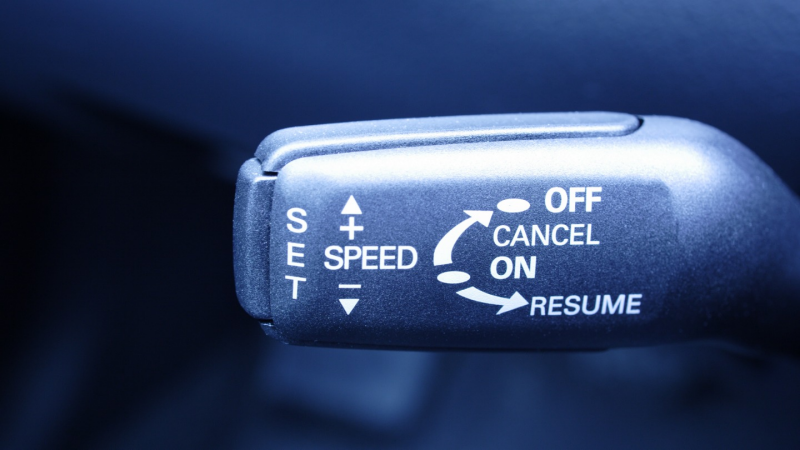Does cruise control save gas?

Modern cars often come equipped with a wide variety of features intended to make life on the road a little easier, with cruise control being one of them. Cruise control tends to be more widely known for saving driver fatigue on long-distance drives, but does cruise control save gas? In short, yes — using cruise control may reduce how much gas your engine is using, but the amount can be hard to quantify. Let’s try and unpack the relationship between cruise control and gas consumption.
Advantages of using cruise control
First, let's understand the basics of how cruise control works. Cruise control is an automated vehicle system that can control your car’s acceleration to maintain a steady speed. In a standard cruise control system, you’ll physically engage a button that triggers your cruise control system to maintain the speed you’re currently traveling at. Stepping on the brakes at any point should disengage the cruise control system. Alternately, there may also be an “off” button.
Modern cars with more advanced automated driver assistance systems may be equipped with adaptive cruise control, which operates differently than standard cruise control. Adaptive cruise control typically uses radar and laser sensors to detect the speed of cars ahead of you and adjusts your car’s speed accordingly to maintain a healthy distance. Standard and adaptative cruise control share some similar advantages, which can include:
- Helps you keep your eyes on the road: Cruise control allows you to set and maintain a steady speed without having to make any acceleration adjustments. In turn, this can reduce your need to focus on the gas pedal and give you more mental space to focus on the road.
- Improves long-distance driving experience: Cruise control may make driving for extended periods easier for similar reasons. By allowing you to relax your foot from the pedal for longer distances, you may feel less fatigued after driving for extended periods — like on your next road trip.
Is cruise control more fuel efficient?
Maintaining a constant speed when driving many modern vehicles may improve your fuel efficiency. Cruise control contributes to your fuel consumption in this way. Using cruise control on highway roads is common for this reason, as there’s little reason to accelerate and decelerate greatly. As a result, standard and adaptive cruise control systems are promoted as a feature that drivers can use for better fuel efficiency.
Does cruise control hurt your car?
Cruise control features are generally designed to support you and your car and shouldn’t damage your car when used appropriately. However, using cruise control on hilly terrain may cause your car to downshift more frequently to maintain your set speed. This can potentially lead to extra wear on your car’s transmission over time. Staying on top of a routine maintenance schedule may help you prolong the life of every component of your car, including its transmission.
As a driver, you may want to keep in mind that although your standard cruise control system may be maintaining your car’s acceleration, you are still in control of all other aspects of driving your car. For safety reasons, it’s best to always stay alert and aware of your surroundings, just as you would when driving without cruise control. Additionally, you’ll need to be prepared to take manual control of the car’s acceleration and braking at a moment’s notice if needed.
In summary
Engaging your car’s cruise control system allows it to control your car’s acceleration to maintain a constant speed. Cruise control may help drivers save on gas since maintaining a steady, consistent speed can help reduce the amount of fuel your engine consumes. While cruise control is generally safe to use for your car, you might not want to turn it on when you’re driving on hilly terrain, as this may cause extra strain on your car’s transmission.



